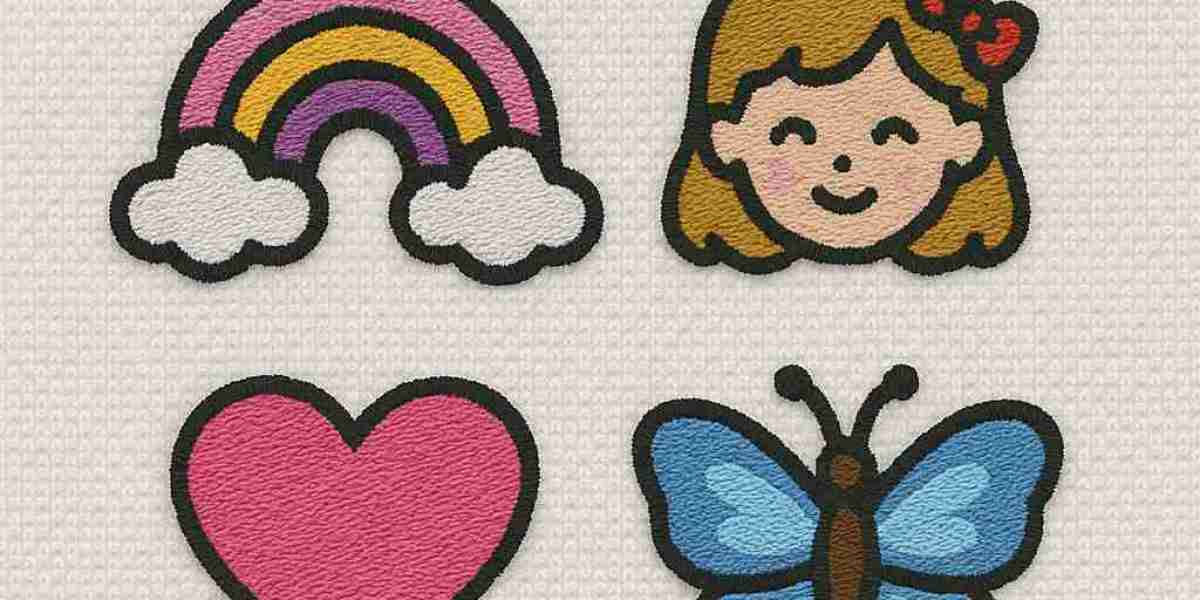How Digitizing Services Are Powering Sustainable Fashion in 2025
Introduction
Sustainability is no longer a buzzword — it’s the future of fashion. As the fashion industry faces pressure to go green, digitizing services have emerged as an unexpected yet powerful ally in reducing waste, enhancing efficiency, and delivering eco-conscious style.
In this article, we’ll explore how digitizing services are driving innovation in sustainable fashion, how brands are using digital solutions to reduce their carbon footprint, and why embroidery digitizing is playing a critical role in the future of ethical apparel manufacturing.
What Are Digitizing Services?
Digitizing services convert visual artwork — like logos, monograms, or illustrations — into digital instructions that machines can read and execute. These instructions allow machines like:
Embroidery machines
Laser cutters
UV printers
Pattern plotters
...to produce highly accurate, repeatable results with minimal human error or waste.
In fashion, digitizing services have traditionally been used for embroidered garments, but their role is expanding dramatically in 2025.
Why Sustainable Fashion Needs Digitizing Services
Fashion is the second-largest polluting industry in the world. Traditional garment production often involves:
Overproduction
Excess fabric waste
Energy-heavy processes
Unsold inventory
With digitizing services, sustainable fashion brands can:
✅ Produce on-demand
✅ Eliminate guesswork
✅ Reduce fabric waste
✅ Automate complex tasks
✅ Use eco-friendly design workflows
How Digitizing Services Support Eco-Friendly Apparel
1. Zero-Waste Embroidery
Digitized embroidery files are optimized for minimal thread waste. AI-driven stitch planning ensures:
Precise thread usage
Reduced trial-and-error
Optimized stitch density
Machine-ready results
This prevents unnecessary production sampling, which reduces material waste.
2. On-Demand Manufacturing
Digitizing allows brands to create "made-to-order" apparel. Instead of mass-producing, companies digitize a design once and fulfill orders individually using:
DTG (Direct-to-Garment) printing
Computerized embroidery
Laser-etched finishing
This eliminates unsold inventory and cuts down on landfill contribution.
3. Digital Pattern Making
Modern digitizing tools convert sketches into digital patterns for laser-cutters or CNC machines. These tools:
Save fabric
Eliminate paper patterns
Speed up the cutting process
Enable virtual garment simulation
Brands like Patagonia and PANGAIA are leading the way with this approach.
4. AI-Enhanced File Optimization
AI tools used by digitizing services can:
Auto-resize designs without distortion
Optimize for fabric type (linen, organic cotton, bamboo)
Detect thread pull or stitch overlap before production
Suggest lower-impact thread choices (eco-polyester)
This makes digitizing an essential part of low-impact apparel design.
Real-World Examples
? GreenStitch Apparel (USA)
Use Case: Digitizing eco-logos for hemp t-shirts
Results:
Reduced thread waste by 22%
Switched to biodegradable thread using digitizing presets
Cut order delivery time by 30% through real-time digital approvals
? EcoFit Wear (Germany)
Use Case: Personalized embroidery for yoga wear
Tech Used: Cloud-based digitizing API + AI stitch planner
Impact:
No unsold inventory
Fully carbon-neutral production
Customer satisfaction score of 96%
Tools Powering Sustainable Digitizing in 2025
| Tool | Use |
|---|---|
| Wilcom Cloud | Eco-friendly embroidery file generation with AI preview |
| CLO3D + Vectorizer.AI | Digitized pattern making from sketches |
| Stitch Era Universal | Multi-fabric compatibility with waste reports |
| Printful API | Auto-digitizing for sustainable POD |
| Embrilliance Essentials | Adjusts design for low-impact threads |
The Economic Advantage
Aside from environmental perks, digitizing services offer strong business benefits for sustainable fashion brands:
? Lower Production Costs
Less sampling, less waste, less overhead.? No Warehousing
Print/embroider on demand → ship → done.? Faster Turnaround
Digitizing designs digitally = no waiting.? Higher Customer Retention
Custom eco products improve loyalty.
Consumer Trends: What Do Buyers Want in 2025?
According to a 2025 study by Fashion Innovation Lab:
87% prefer sustainable clothing
64% are willing to pay more for custom eco-products
78% trust brands offering transparency in their production process
Digitizing services enable all three by offering:
Customization
Efficient production
Traceability of design-to-product
What Brands Should Consider
Before investing in digitizing services for sustainable fashion, consider:
| Question | Tip |
|---|---|
| What machines will you use? | Ensure file compatibility (e.g., .DST, .EMB) |
| Do you need scalable personalization? | Choose a service with API integration |
| Is your fabric eco-sensitive? | Use AI-based stitch optimization |
| Are you outsourcing production? | Digitized files must include complete machine paths |
Future Outlook
? By 2030, expect:
Blockchain-integrated digitizing files
Verify sustainable production chains.AR Embroidery Mockups
See how eco-designs will look before production.Self-learning digitizing engines
Trained on sustainable material behavior (bamboo, banana fiber, etc.)Circular Design Platforms
Reuse digitized files across seasons with updated eco-guidelines.
Conclusion
In 2025, digitizing services are doing more than creating clean embroidery files — they are shaping the future of sustainable, responsible fashion.
From reducing waste and lowering costs to increasing speed and enabling personalization, digital file conversion is now a mission-critical tool for ethical brands.
If you're building a fashion brand or already run one, now’s the time to digitize sustainably — and align your business with a greener, cleaner future.




